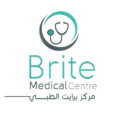Dental Advices Provided to you by: Brite Medical Center
A monthly newsletter from the National Institutes of Health, part of the U.S. Department of Health and Human Services
February 2023
Print this issue
Start Early to Protect Tooth Health
Oral health is important at every age. A healthy mouth helps you eat and speak, and healthy teeth can give you a winning smile. If you’re caring for young children, you can help them get an early start at protecting their teeth, gums, and mouth.
Newborn babies have a cute toothless smile. Even though you can’t see the baby’s teeth, they’re hiding just beneath the gums.
“You can start cleaning your baby’s mouth with a clean, soft cloth even before the first teeth come in,” says Dr. Tim Iafolla, a dental health expert at NIH. “That way your baby gets used to having his or her mouth cared for.”
Baby teeth may start to appear at about 6 months of age. As early as 6 years old, these teeth may begin falling out. Though baby teeth are temporary, they are important.
“Baby teeth are used for chewing food, of course, but they also guide growth of the jaw bones, and they make room for the permanent teeth when they come in,” Iafolla explains.
Once teeth start to emerge, tooth decay can become a problem. “Tooth decay can cause early loss of teeth, which can affect speech, nutrition, and appearance,” Iafolla says.
Pain from tooth decay might cause kids to miss school. If left unchecked, tooth decay can lead to a serious infection, or abscess, that may spread to other parts of the body.
Tooth decay is caused by sugar-loving bacteria that grow in the mouth. The bacteria use sugar to make acids. Over time, these acids can wear away your teeth’s hard enamel coating and create a hole, or cavity. Eating or drinking sugary things, or snacking often throughout the day, feeds the bacteria and creates more acid, which can lead to cavities.
The good news is that tooth decay can be prevented. Start by encouraging kids to eat healthy foods and brush their teeth twice a day. Consider flossing daily as well.
Regular visits to the dentist also help. Baby teeth can be painted with a thin coating that can prevent or reduce cavities, called a fluoride varnish. Fluoride varnish should be reapplied twice a year.
Once permanent teeth come in, dentists can paint the back teeth with protective coatings called dental sealants. Both dental sealants and fluoride varnish are preventive treatments that are usually covered by insurance.
“Sealants harden to form a protective shield against germs and food,” Iafolla says. “They last for years and can prevent 80% of cavities in the back teeth.”
“Helping your children develop healthy dental and nutritional habits early in childhood can set them up for a lifetime of good dental health,” Iafolla says.
See the Wise Choices box for a timeline of tips.
Addressing Childhood Bullying
Delivering Safer Pregnancies
Advances in Childhood Cancer
Wipe Out Whooping Cough
It’s never too early to create tooth-healthy habits.
During pregnancy, brush your teeth twice a day, floss daily, and schedule a dental check-up before your due date.
Before teeth appear, gently wipe your baby’s gums twice a day with a soft, clean cloth.
When teeth emerge, clean them twice a day with a cloth or very soft toothbrush.
At age 1, take your child to the dentist and schedule regular check-ups. Ask when it’s time to start using fluoride toothpaste or get fluoride treatments.
Starting at age 2 or 3, brush your child’s teeth with a pea-sized drop of toothpaste. Help them brush twice a day until they have good brushing skills. Make sure they spit out toothpaste.
Around age 7 or 8, kids can brush and floss their own teeth. Help them create a habit of brushing in the morning and before bed. Check from time to time to make sure they’re brushing all their teeth.
At all ages, encourage healthy eating. Avoid sugary foods and drinks.
Assessing the relationship between children’s oral health status and that of their mothers. Dye BA, Vargas CM, Lee JJ, Magder L, Tinanoff N. J Am Dent Assoc. 2011 Feb;142(2):173-83. doi: 10.14219/jada.archive.2011.0061. PMID: 21282684.
Periodontal infection and preterm birth: results of a prospective study. Jeffcoat MK, Geurs NC, Reddy MS, Cliver SP, Goldenberg RL, Hauth JC. J Am Dent Assoc. 2001 Jul;132(7):875-80. doi: 10.14219/jada.archive. 2001.0299. PMID: 11480640.
Maternal periodontitis and prematurity. Part I: Obstetric outcome of prematurity and growth restriction. Offenbacher S, Lieff S, Boggess KA, Murtha AP, Madianos PN, Champagne CM, McKaig RG, Jared HL, Mauriello SM, Auten RL Jr, Herbert WN, Beck JD. Ann Periodontol. 2001 Dec; 6(1):164-74. Doi: 10.1902/annals.2001.6.1.164. PMID: 11887460.
NIH Office of Communications and Public Liaison
Building 31, Room 5B52
Bethesda, MD 20892-2094
nihnewsinhealth@od.nih.gov
Tel: 301-451-8224
Editor: Harrison Wein, Ph.D.
Managing Editor: Tianna Hicklin, Ph.D.
Illustrator: Alan Defibaugh
Attention Editors: Reprint our articles and illustrations in your own publication. Our material is not copyrighted. Please acknowledge NIH News in Health as the source and send us a copy.
For more consumer health news and information, visit health.nih.gov.
For wellness toolkits, visit www.nih.gov/wellnesstoolkits.
NIH…Turning Discovery Into Health®
National Institutes of Health
9000 Rockville Pike, Bethesda, Maryland 20892
U.S. Department of Health and Human Services
Book Your Appontment with Our Dental Team Now: Call: +97444147405
